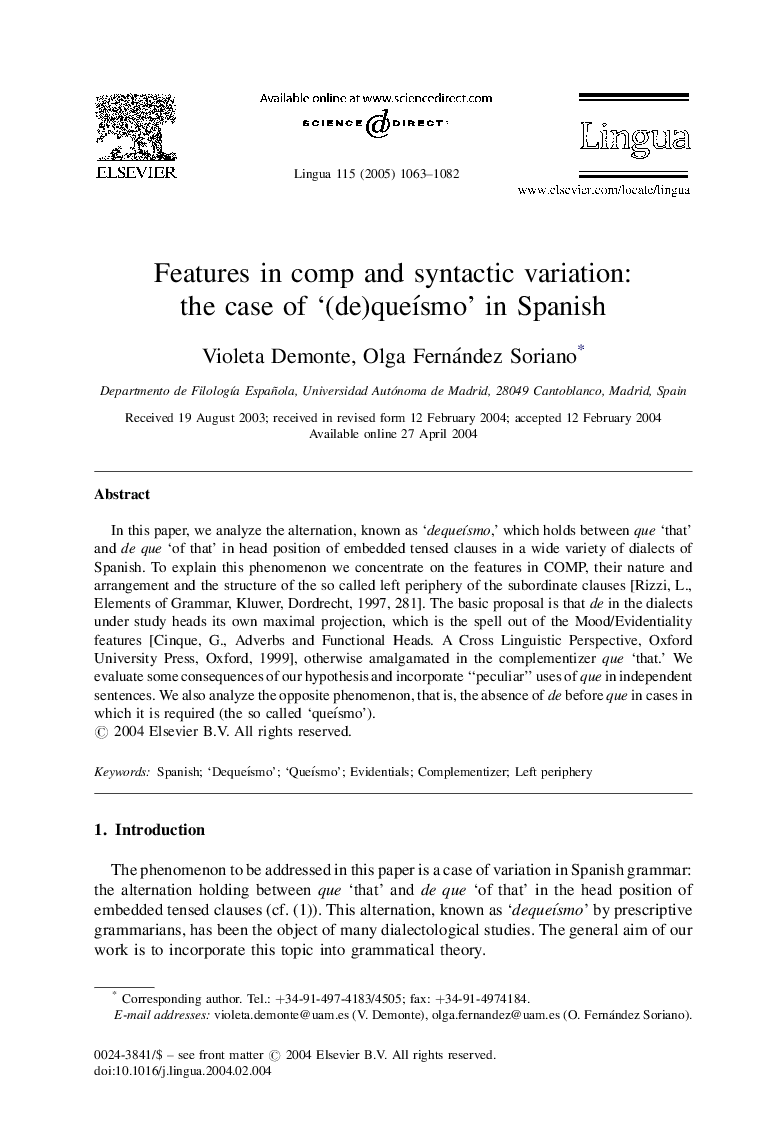| Article ID | Journal | Published Year | Pages | File Type |
|---|---|---|---|---|
| 10461159 | Lingua | 2005 | 20 Pages |
Abstract
In this paper, we analyze the alternation, known as 'dequeıÌsmo,' which holds between que 'that' and de que 'of that' in head position of embedded tensed clauses in a wide variety of dialects of Spanish. To explain this phenomenon we concentrate on the features in COMP, their nature and arrangement and the structure of the so called left periphery of the subordinate clauses [Rizzi, L., Elements of Grammar, Kluwer, Dordrecht, 1997, 281]. The basic proposal is that de in the dialects under study heads its own maximal projection, which is the spell out of the Mood/Evidentiality features [Cinque, G., Adverbs and Functional Heads. A Cross Linguistic Perspective, Oxford University Press, Oxford, 1999], otherwise amalgamated in the complementizer que 'that.' We evaluate some consequences of our hypothesis and incorporate “peculiar” uses of que in independent sentences. We also analyze the opposite phenomenon, that is, the absence of de before que in cases in which it is required (the so called 'queıÌsmo').
Related Topics
Social Sciences and Humanities
Arts and Humanities
Language and Linguistics
Authors
Violeta Demonte, Olga Fernández Soriano,
